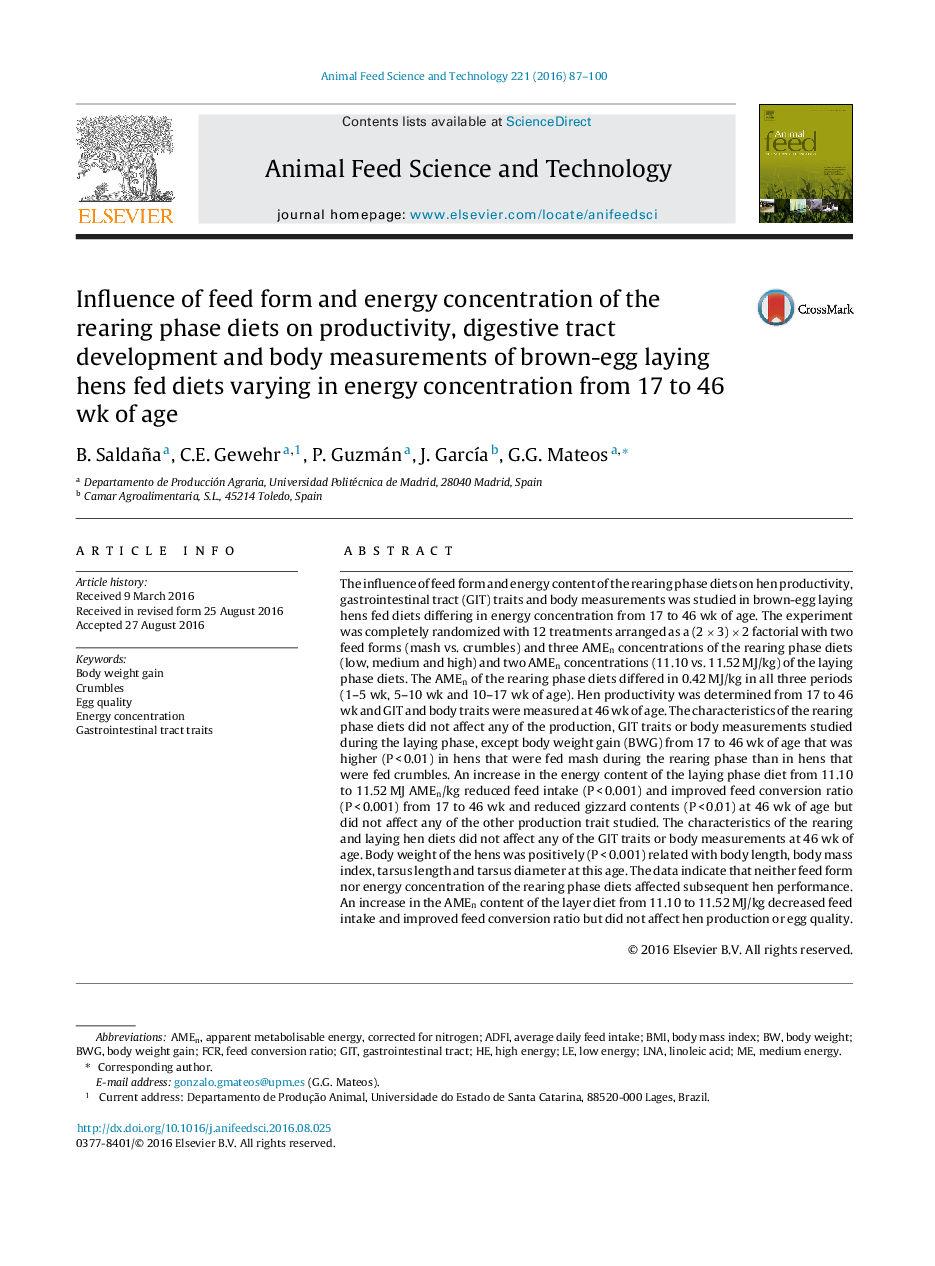| Article ID | Journal | Published Year | Pages | File Type |
|---|---|---|---|---|
| 2419226 | Animal Feed Science and Technology | 2016 | 14 Pages |
•Feed form of the rearing phase diets did not affect subsequent egg production.•Energy content of the rearing diets did not affect subsequent egg production.•Layerdiet energy had noeffecton egg production but improved feed efficiency.•Rearing and layer diets did not affect GIT or body measurements at 46 wk of age.
The influence of feed form and energy content of the rearing phase diets on hen productivity, gastrointestinal tract (GIT) traits and body measurements was studied in brown-egg laying hens fed diets differing in energy concentration from 17 to 46 wk of age. The experiment was completely randomized with 12 treatments arranged as a (2 × 3) × 2 factorial with two feed forms (mash vs. crumbles) and three AMEn concentrations of the rearing phase diets (low, medium and high) and two AMEn concentrations (11.10 vs. 11.52 MJ/kg) of the laying phase diets. The AMEn of the rearing phase diets differed in 0.42 MJ/kg in all three periods (1–5 wk, 5–10 wk and 10–17 wk of age). Hen productivity was determined from 17 to 46 wk and GIT and body traits were measured at 46 wk of age. The characteristics of the rearing phase diets did not affect any of the production, GIT traits or body measurements studied during the laying phase, except body weight gain (BWG) from 17 to 46 wk of age that was higher (P < 0.01) in hens that were fed mash during the rearing phase than in hens that were fed crumbles. An increase in the energy content of the laying phase diet from 11.10 to 11.52 MJ AMEn/kg reduced feed intake (P < 0.001) and improved feed conversion ratio (P < 0.001) from 17 to 46 wk and reduced gizzard contents (P < 0.01) at 46 wk of age but did not affect any of the other production trait studied. The characteristics of the rearing and laying hen diets did not affect any of the GIT traits or body measurements at 46 wk of age. Body weight of the hens was positively (P < 0.001) related with body length, body mass index, tarsus length and tarsus diameter at this age. The data indicate that neither feed form nor energy concentration of the rearing phase diets affected subsequent hen performance. An increase in the AMEn content of the layer diet from 11.10 to 11.52 MJ/kg decreased feed intake and improved feed conversion ratio but did not affect hen production or egg quality.
